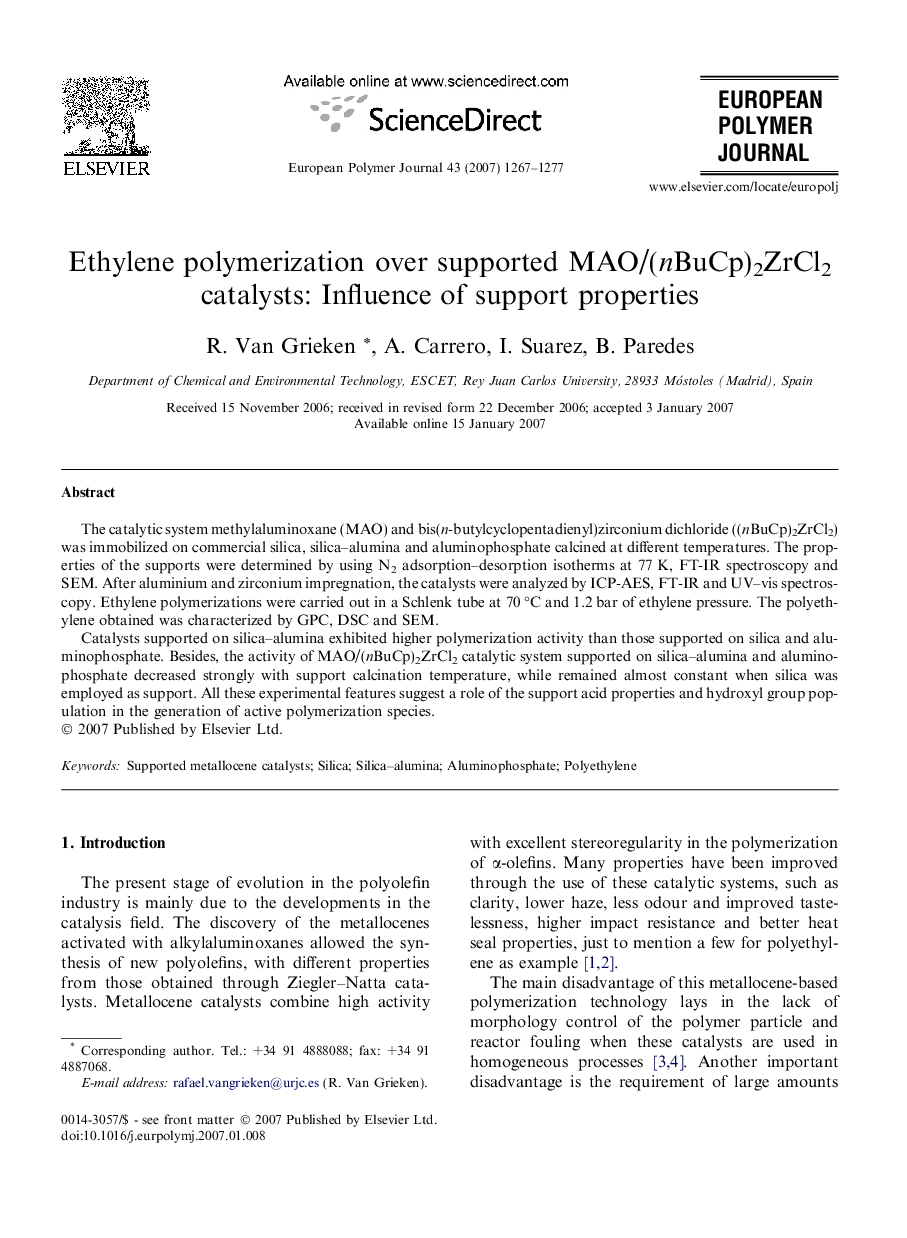| Article ID | Journal | Published Year | Pages | File Type |
|---|---|---|---|---|
| 1398553 | European Polymer Journal | 2007 | 11 Pages |
The catalytic system methylaluminoxane (MAO) and bis(n-butylcyclopentadienyl)zirconium dichloride ((nBuCp)2ZrCl2) was immobilized on commercial silica, silica–alumina and aluminophosphate calcined at different temperatures. The properties of the supports were determined by using N2 adsorption–desorption isotherms at 77 K, FT-IR spectroscopy and SEM. After aluminium and zirconium impregnation, the catalysts were analyzed by ICP-AES, FT-IR and UV–vis spectroscopy. Ethylene polymerizations were carried out in a Schlenk tube at 70 °C and 1.2 bar of ethylene pressure. The polyethylene obtained was characterized by GPC, DSC and SEM.Catalysts supported on silica–alumina exhibited higher polymerization activity than those supported on silica and aluminophosphate. Besides, the activity of MAO/(nBuCp)2ZrCl2 catalytic system supported on silica–alumina and aluminophosphate decreased strongly with support calcination temperature, while remained almost constant when silica was employed as support. All these experimental features suggest a role of the support acid properties and hydroxyl group population in the generation of active polymerization species.
